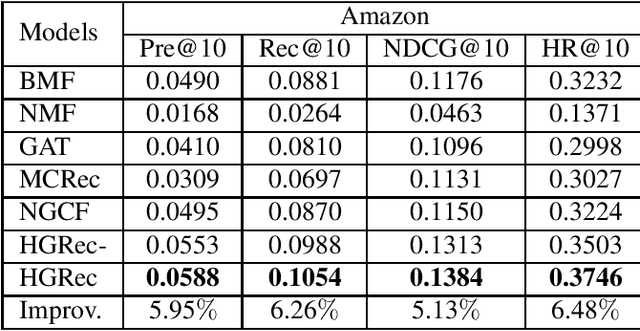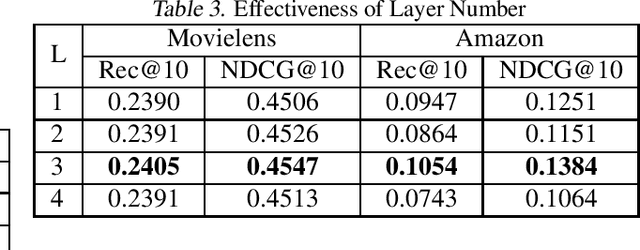Houye Ji
Neural Graph Matching for Video Retrieval in Large-Scale Video-driven E-commerce
Aug 01, 2024



Abstract:With the rapid development of the short video industry, traditional e-commerce has encountered a new paradigm, video-driven e-commerce, which leverages attractive videos for product showcases and provides both video and item services for users. Benefitting from the dynamic and visualized introduction of items,video-driven e-commerce has shown huge potential in stimulating consumer confidence and promoting sales. In this paper, we focus on the video retrieval task, facing the following challenges: (1) Howto handle the heterogeneities among users, items, and videos? (2)How to mine the complementarity between items and videos for better user understanding? In this paper, we first leverage the dual graph to model the co-existing of user-video and user-item interactions in video-driven e-commerce and innovatively reduce user preference understanding to a graph matching problem. To solve it, we further propose a novel bi-level Graph Matching Network(GMN), which mainly consists of node- and preference-level graph matching. Given a user, node-level graph matching aims to match videos and items, while preference-level graph matching aims to match multiple user preferences extracted from both videos and items. Then the proposed GMN can generate and improve user embedding by aggregating matched nodes or preferences from the dual graph in a bi-level manner. Comprehensive experiments show the superiority of the proposed GMN with significant improvements over state-of-the-art approaches (e.g., AUC+1.9% and CTR+7.15%). We have developed it on a well-known video-driven e-commerce platform, serving hundreds of millions of users every day
Interpreting and Unifying Graph Neural Networks with An Optimization Framework
Jan 28, 2021



Abstract:Graph Neural Networks (GNNs) have received considerable attention on graph-structured data learning for a wide variety of tasks. The well-designed propagation mechanism which has been demonstrated effective is the most fundamental part of GNNs. Although most of GNNs basically follow a message passing manner, litter effort has been made to discover and analyze their essential relations. In this paper, we establish a surprising connection between different propagation mechanisms with a unified optimization problem, showing that despite the proliferation of various GNNs, in fact, their proposed propagation mechanisms are the optimal solution optimizing a feature fitting function over a wide class of graph kernels with a graph regularization term. Our proposed unified optimization framework, summarizing the commonalities between several of the most representative GNNs, not only provides a macroscopic view on surveying the relations between different GNNs, but also further opens up new opportunities for flexibly designing new GNNs. With the proposed framework, we discover that existing works usually utilize naive graph convolutional kernels for feature fitting function, and we further develop two novel objective functions considering adjustable graph kernels showing low-pass or high-pass filtering capabilities respectively. Moreover, we provide the convergence proofs and expressive power comparisons for the proposed models. Extensive experiments on benchmark datasets clearly show that the proposed GNNs not only outperform the state-of-the-art methods but also have good ability to alleviate over-smoothing, and further verify the feasibility for designing GNNs with our unified optimization framework.
Heterogeneous Graph Neural Network for Recommendation
Sep 02, 2020


Abstract:The prosperous development of e-commerce has spawned diverse recommendation systems. As a matter of fact, there exist rich and complex interactions among various types of nodes in real-world recommendation systems, which can be constructed as heterogeneous graphs. How learn representative node embedding is the basis and core of the personalized recommendation system. Meta-path is a widely used structure to capture the semantics beneath such interactions and show potential ability in improving node embedding. In this paper, we propose Heterogeneous Graph neural network for Recommendation (HGRec) which injects high-order semantic into node embedding via aggregating multi-hops meta-path based neighbors and fuses rich semantics via multiple meta-paths based on attention mechanism to get comprehensive node embedding. Experimental results demonstrate the importance of rich high-order semantics and also show the potentially good interpretability of HGRec.
 Add to Chrome
Add to Chrome Add to Firefox
Add to Firefox Add to Edge
Add to Edge